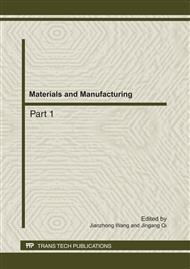p.759
p.764
p.770
p.774
p.778
p.785
p.789
p.794
p.798
Orientational Analysis on Static Recrystallization at Tension Twins in AZ31 Magnesium Alloy
Abstract:
The deformation depends on twinning in Mg alloy, and twins will be the dominant recrystallization nucleation site. Tension twinning proceeds much more easily than compression twinning since its volume fraction is much higher than that of compression twins, which may have a promotive effect on the recrystallization to a certain degree. Based on the previous research on the static recrystallization at compression twins, the evolution of microstructure and texture in AZ31 magnesium alloy during its static recystallization at tension twins was further investigated; and the orientational characteristics of new grains formed at tension twins in the early stage of static recrystallization were analyzed by EBSD technique. The results showed that the strong basal texture was retained and weakened with no new texture component being detected during annealing. New grains were observed to nucleate preferentially at the intersections of tension twin variants or the intersection between tension twins and compression twins. Their orientations are relatively random and are strongly scattered from those of original tension twins or compression twins. A comparison of the recrystallization at tension twins and compression twins was further made.
Info:
Periodical:
Pages:
778-784
Citation:
Online since:
July 2011
Keywords:
Price:
Сopyright:
© 2011 Trans Tech Publications Ltd. All Rights Reserved
Share:
Citation:


